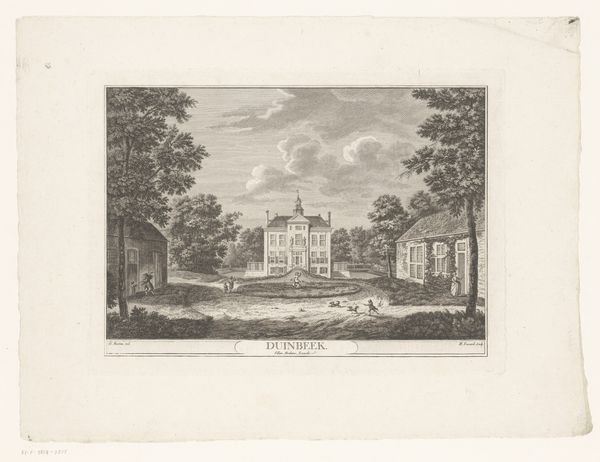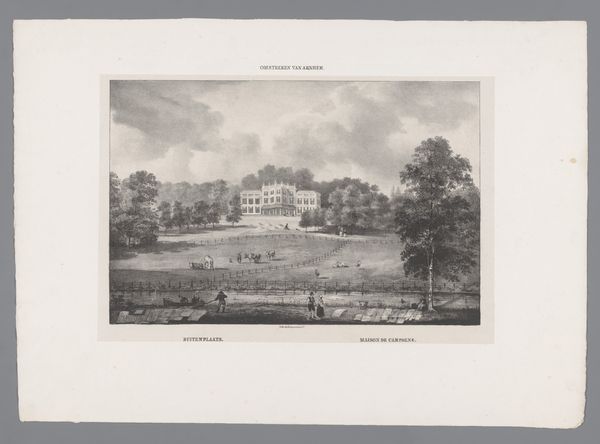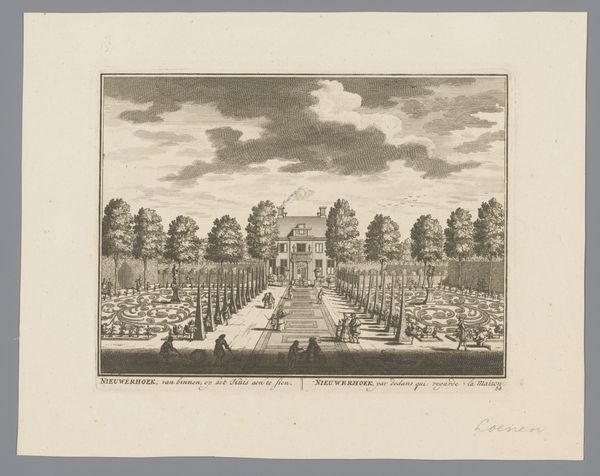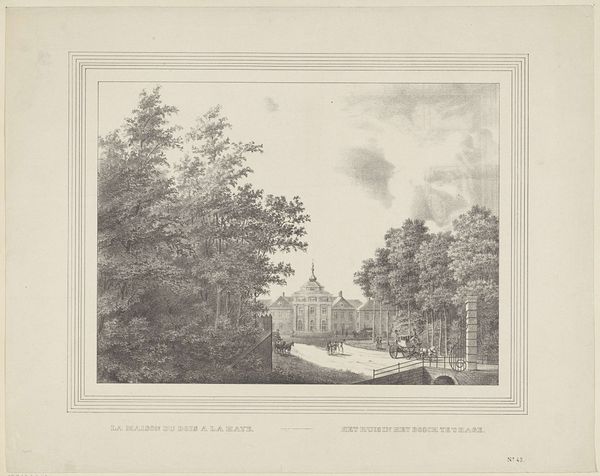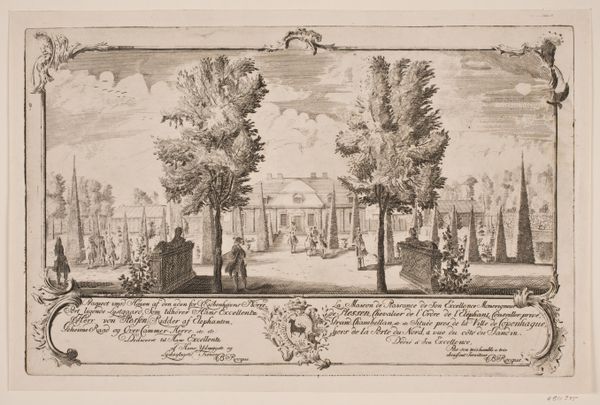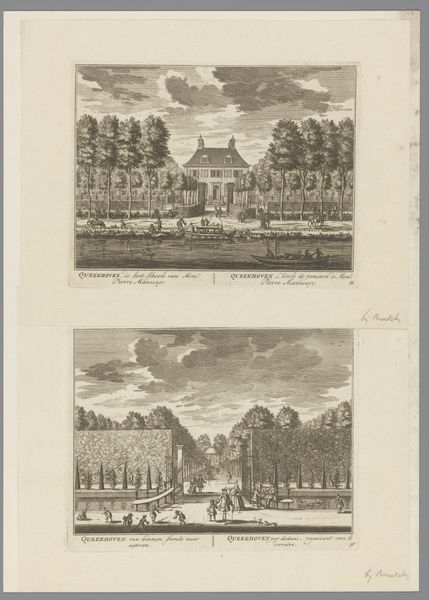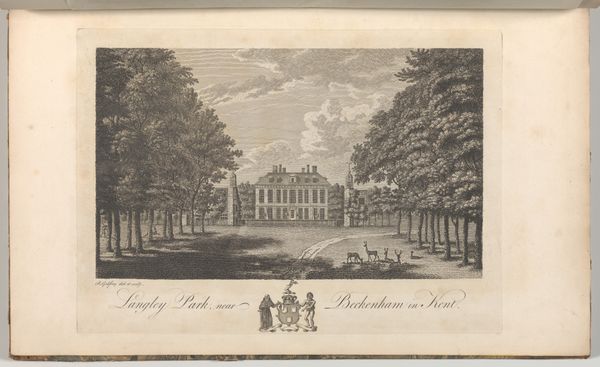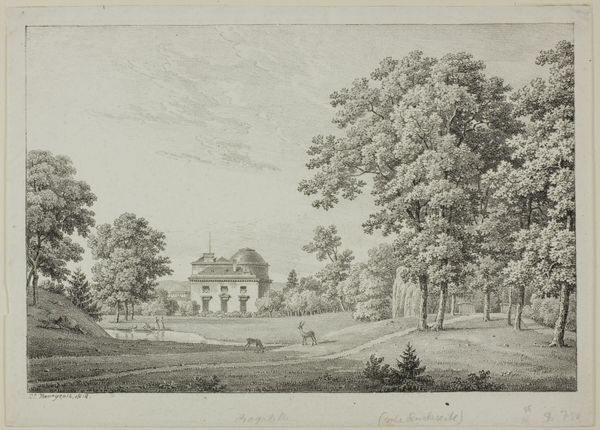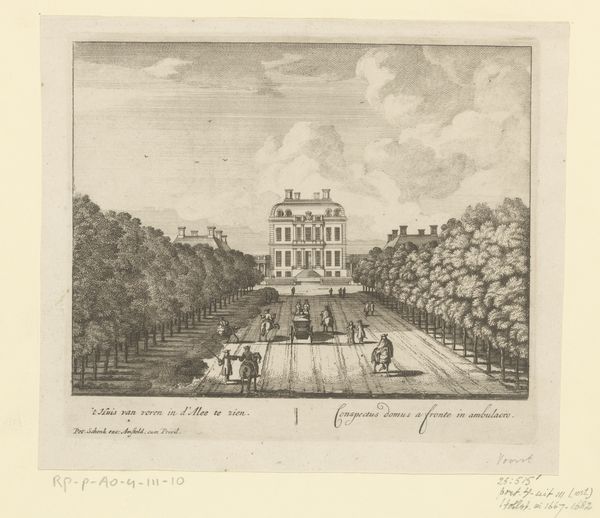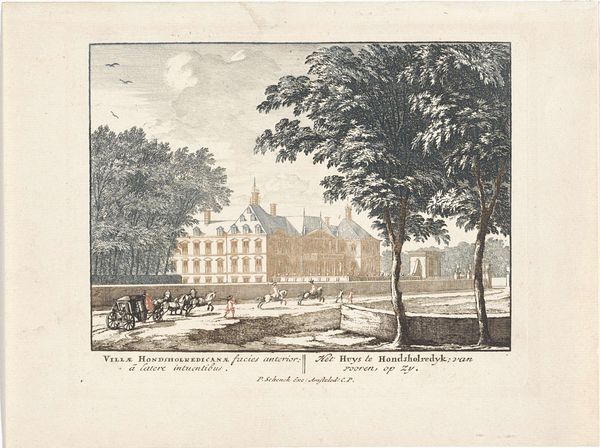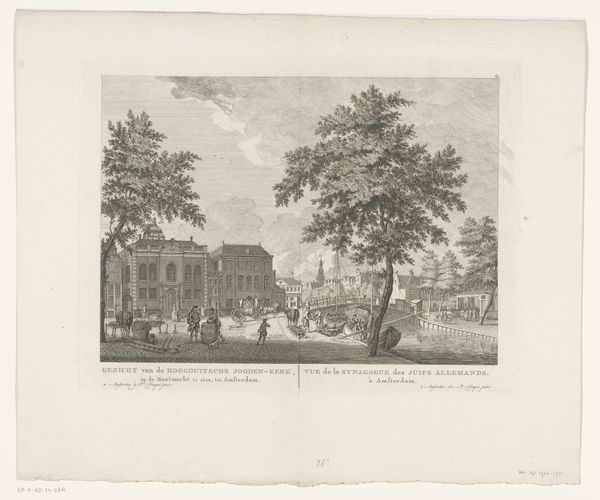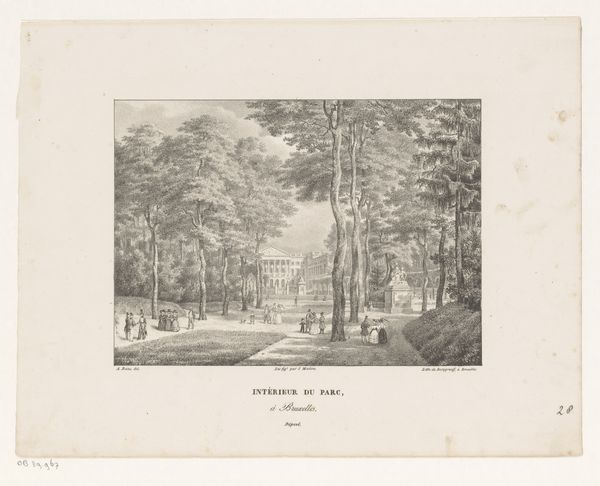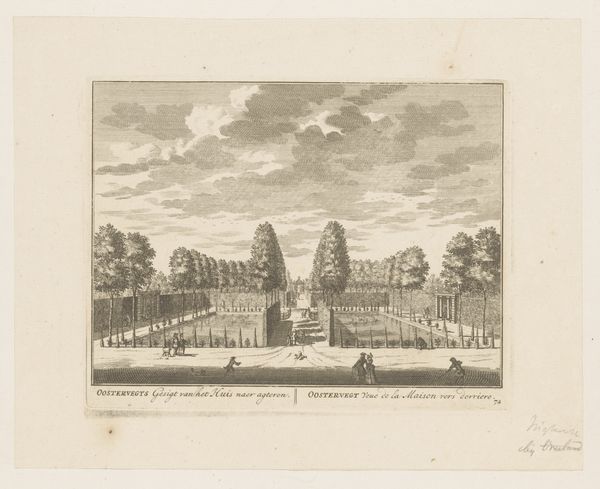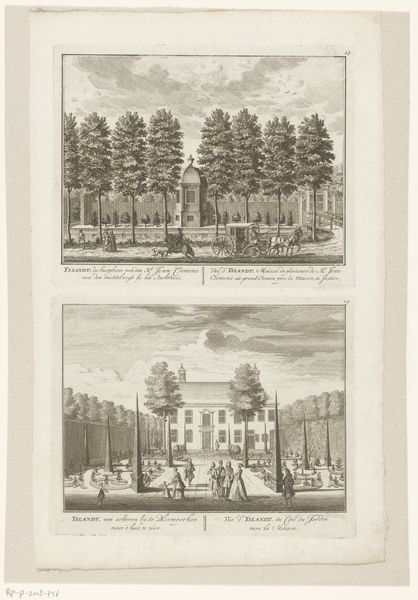
print, engraving
#
neoclacissism
# print
#
landscape
#
cityscape
#
engraving
Dimensions: height 310 mm, width 330 mm
Copyright: Rijks Museum: Open Domain
Jan Arends created this print of the Lusthof Sint-Jan ten Heere, a pleasure garden, sometime in the 18th century. It captures an era of aristocratic leisure, but what stories are not immediately visible? The image presents an ordered, idealized space, yet this order exists in stark contrast to the labor and colonial exploitation that funded such opulence. Consider Johan Pieter van den Brande, the figure associated with this estate. As a Baronet and mayor, his status was interwoven with the economic systems of the time. These systems often depended on the subjugation of others. What did it mean to find pleasure in a garden when such pleasure was predicated on inequality? How did the elite reconcile ideals of virtue with the realities of commerce and colonialism? The print invites us to reflect on the complexities of history. It encourages us to consider whose stories are told, whose are omitted, and the uncomfortable truths that lie beneath the surface of beauty.
Comments
No comments
Be the first to comment and join the conversation on the ultimate creative platform.
